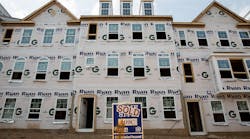Latest from Economic Data
3Q 2024's Billion-Dollar Mega-Projects
3Q 2024 Business Conditions & Latest Pricing Trends
Forecasters Temper Optimism in AIA’s Updated Consensus Construction Forecast
The updated AIA Consensus Construction Forecast projects annual growth in the 3.5% to 4% range for the remainder of 2017 as well as for 2018, with a slower growing commercial/industrial market, and an institutional sector facing several challenges. While a press release issued by the American Institute of Architects (AIA), Washington, D.C., said some slowdown in the commercial sector was anticipated for 2017 and 2018, it was expected to be offset by acceleration in the institutional sector. However, year-to-date growth in spending for institutional buildings is at only 3%, well below expectations when the year began.
Published annually by AIA, the Consensus Construction Forecast incorporates the forecasts of the nation’s leading construction forecasters: Dodge Data & Analytics, IHS Economics, Moody’s Economy.com, FMI, ConstructConnect, Associated Builders and Contractors and Wells Fargo Securities. You can access the individual forecasts and analysis by Kermit Baker, AIA’s chief economist at http://bit.ly/2uTYKWx.
Baker said in the press release that despite billings at architecture firms performing quite well this year, the larger construction industry is facing a range of issues. “The somewhat weaker outlook is driven by several factors, some dealing with the broader U.S. economy, some dealing with general construction industry fundamentals, and some dealing with weakness in specific construction sectors.” he said.
In his analysis of the forecast at www.aia.org, Baker said some key factors in the less optimistic forecast was the lack of progress in Washington, D.C., on several pieces of legislation that construction industry executives and economists thought would help pump up construction spending.










